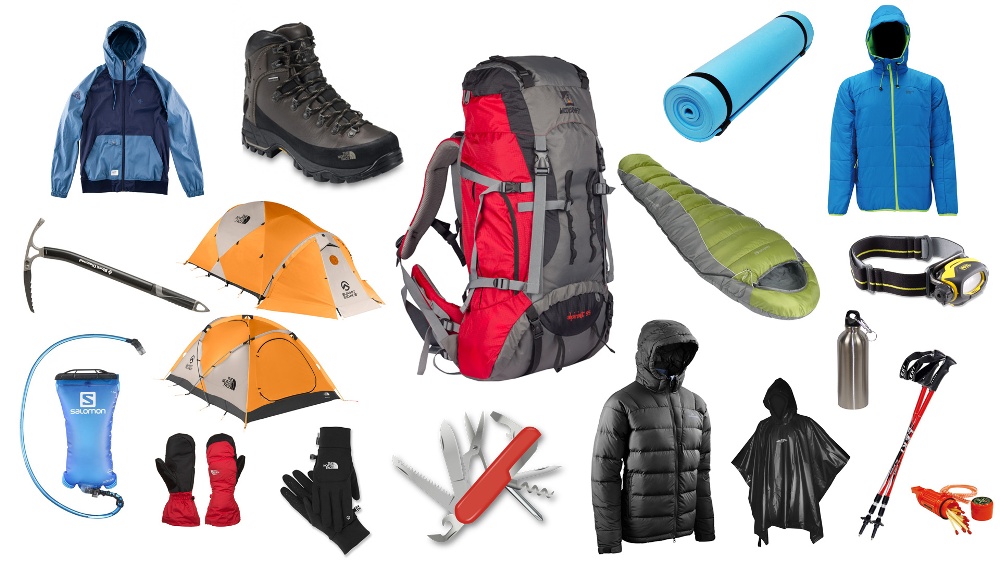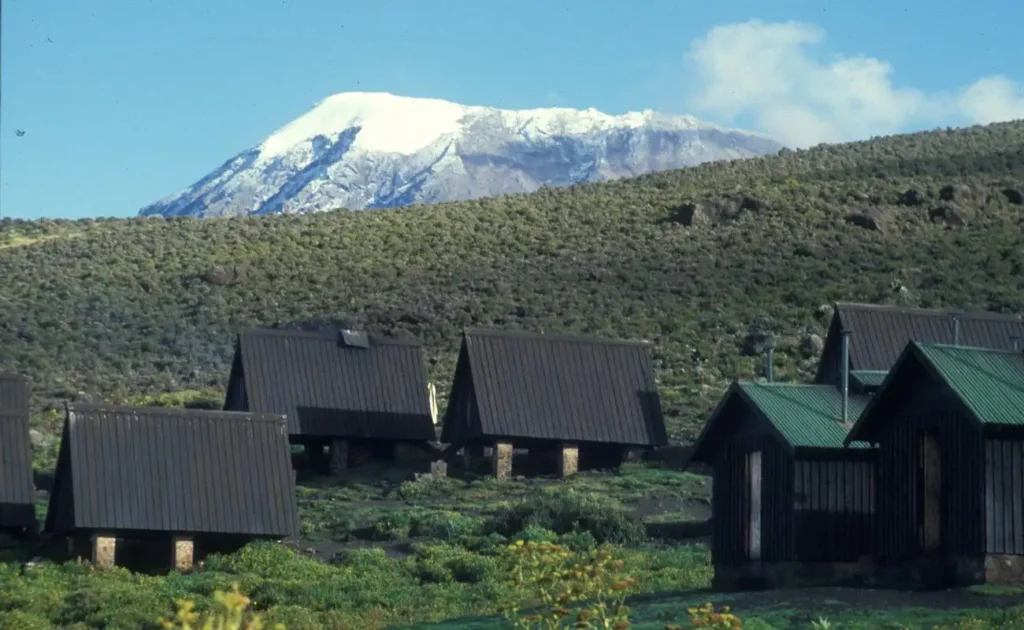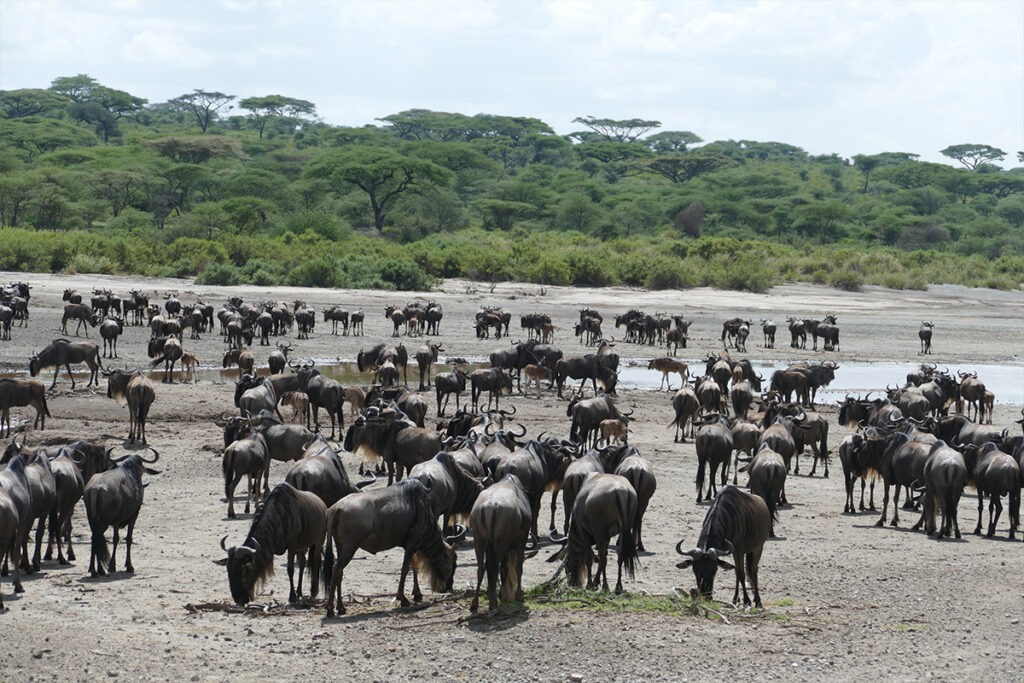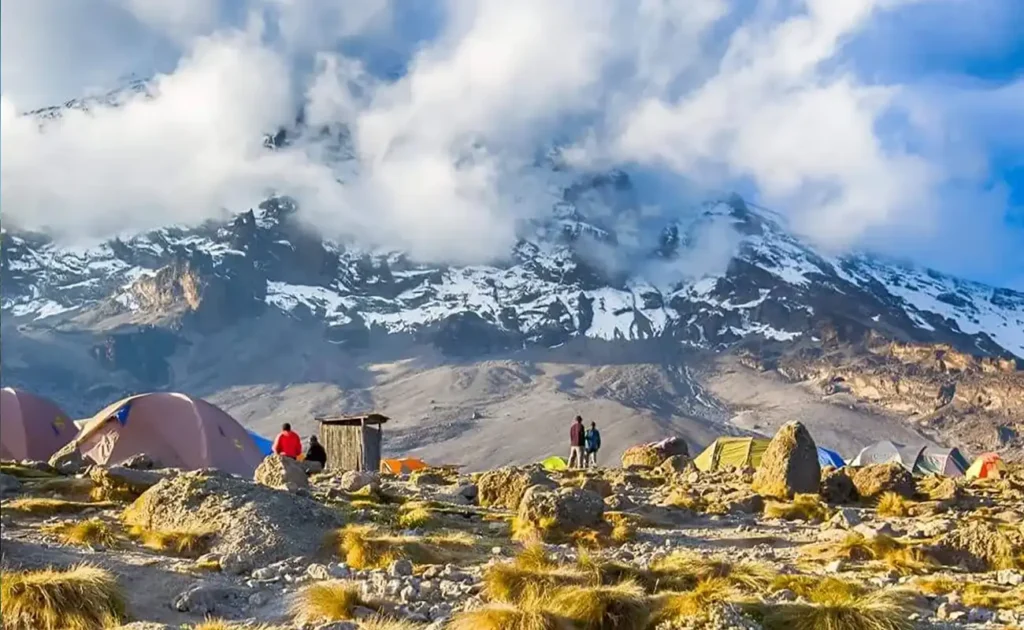Climbing Kilimanjaro is no small feat, not only because it is the tallest free-standing mountain in the world, but also because of the extreme environmental conditions you’ll face. With temperatures ranging from the tropical base to the arctic summit, having the right gear can mean the difference between success and failure. Are you prepared for a sudden ice storm or intense sunlight at high altitudes?
Your essential pack should include multi-layered clothing to adapt to temperature changes, sturdy hiking boots, and a reliable hydration system. Historically, many climbers have failed to reach the summit due to inadequate gear—over 25% report facing gear-related issues. Ensuring you have high-quality, purpose-built equipment increases your chances of a successful ascent significantly.

Essential Gear for Your Kilimanjaro Climb
Climbing Mount Kilimanjaro requires more than just determination. You must have the right gear to withstand the diverse conditions you will encounter. Layered clothing is essential, starting with moisture-wicking base layers followed by insulating layers and a waterproof outer shell. Each layer has a specific purpose to keep your body temperature regulated. Always pack extra socks and gloves to keep your extremities warm and dry.
Sturdy hiking boots are another must-have for such a climb. Your boots should be well broken-in to prevent blisters and provide good ankle support. Consider bringing gaiters to keep debris and moisture out of your boots. These add an extra layer of protection that can make a big difference. A quality pair of trekking poles can help maintain balance on uneven trails.
Staying hydrated is crucial at high altitudes. Use a hydration system that allows you to sip water consistently without having to stop. This could be a hydration bladder or water bottles with insulated sleeves. Carrying water purification tablets or a portable filter system is also wise. Kilimanjaro’s environment can dehydrate you quickly, so make hydration a priority.
Additional gear includes a headlamp with extra batteries, a reliable daypack, and high-energy snacks. A headlamp can help you navigate in the dark, especially during early morning summit attempts. Your daypack should be spacious enough to carry all essentials without being too heavy. High-energy snacks like nuts and dried fruits can provide quick, accessible nutrients during your ascent.
Kilimanjaro Gear Rental: Everything You Need Before Your Climb (Part 1)
Navigating the Difficult Terrain: The Importance of Sturdy Footwear
Choosing the right footwear for your Kilimanjaro climb is crucial. The mountain’s varied terrain ranges from rocky paths to muddy trails. Your boots need to offer not just durability but also exceptional grip. Slippery rocks can pose a significant challenge, so a pair with a strong tread pattern is essential. Proper ankle support is also key, helping prevent injuries on uneven ground.
Comfort in your boots can make a significant difference in your journey. Ill-fitting boots can lead to blisters, slowing you down and affecting your overall experience. It’s important to break in your boots well before the trip. This ensures they mold to your feet and provide optimum comfort. Consider wearing thick hiking socks to add cushioning and prevent friction.
Insulation and waterproofing features in boots can protect against Kilimanjaro’s unpredictable weather. Wet feet can lead to cold feet, making the climb uncomfortable. Look for boots with a reliable waterproof membrane and adequate insulation. This is especially important during the colder, windier high-altitude sections. Staying dry helps in maintaining body warmth and keeping spirits high.
In addition to boots, consider using gaiters for additional protection. They wrap around your boots and lower pant legs, offering a shield against mud and water. Here are their key benefits:
- Prevent debris from entering your boots.
- Shield against snow and rain.
- Add an extra layer of warmth.
Pairing gaiters with sturdy boots enhances your climbing experience, particularly in challenging weather conditions.
Weathering the Conditions: The Necessity of Multi-Layered Clothing
Climbing Kilimanjaro means facing a wide range of weather conditions, making multi-layered clothing essential. At the mountain’s base, you’ll enjoy tropical warmth. However, as you ascend, temperatures drop significantly. Each clothing layer serves a unique purpose, from moisture-wicking base layers to keep you dry, to insulating layers that trap heat. Finally, a waterproof outer layer protects against wind and rain.
Layering allows you to adjust to temperature changes quickly. If you feel warm, removing a layer helps prevent overheating. Conversely, adding a layer when cold aids in retaining body warmth. This flexibility is vital during the climb as weather shifts can catch you off guard. Proper layering is a skill that’s indispensable for such an unpredictable environment.
When choosing materials for your layers, opt for those designed specifically for outdoor activities. Avoid fabrics like cotton that absorb moisture and take a long time to dry. Instead, select synthetic or wool materials that wick sweat away and dry rapidly. These help maintain comfort and reduce the risk of hypothermia. Keeping your core dry is fundamental to enduring harsh conditions comfortably.
Additional clothing accessories, like hats and gloves, add crucial protection. They help retain body heat in areas where it’s easily lost. Here’s a simple way to remember essential gear:
- Base Layer: Breathable and moisture-wicking.
- Insulating Layer: Warmth-retentive.
- Outer Layer: Waterproof and windproof.
Packing items from this checklist ensures you’re well-equipped to brave Kilimanjaro’s challenging weather patterns.
Staying Hydrated: The Key Role of an Effective Hydration System
Climbing Kilimanjaro requires immense physical effort, making hydration extremely important. Dehydration can set in rapidly at high altitudes, affecting performance and health. An effective hydration system ensures you’re consistently sipping water throughout your journey. Hydration bladders with drinking tubes offer easy access without needing to stop. This convenience keeps you focused on the challenging terrain.
Water intake needs to be more frequent at high altitudes as it helps in acclimatization. Consuming small amounts at regular intervals is better than drinking large amounts infrequently. This strategy maintains fluid levels without overwhelming your body. Proper hydration supports your circulatory system, helping the body deliver oxygen efficiently. Increased oxygen flow aids in meeting the physical demands of the ascent.
Packing water filtration methods or purification tablets is also key, as natural water sources should always be treated. Contaminated water can quickly spoil your adventure with illness. Portable filtration devices are light and ensure a continuous supply of safe drinking water. They are easy to use and require minimal effort. Ensuring clean water access means one less worry during the climb.
Supplementing water with electrolytes can further bolster your hydration strategy. Trekking at altitude depletes minerals through sweat that plain water can’t replace. Including electrolyte tablets or powders in your kit bridges this gap. These supplements help maintain energy levels and prevent cramps. Here are some electrolyte sources you can consider:
- Tablets: Easy to pack and straightforward to use.
- Packs: Offer a quick solution to replenish lost salts.
- Chews: Compact and convenient for mid-climb energy boosts.
Using a combination of these strategies ensures you stay hydrated and ready for the challenges ahead.
Incorporating these methods into your hydration routine can transform your climbing experience. Staying hydrated reduces fatigue and enhances your body’s ability to adjust to the altitude. Dedicated hydration systems paired with supplemental aids provide a comprehensive approach. This preparation allows you to focus more on enjoying the breathtaking views instead of worrying about physical setbacks. A well-hydrated climber is a successful climber.
Dangers of Ill-Preparation: How Inadequate Gear Impacts Climbers
Embarking on a Kilimanjaro climb without proper gear can result in numerous challenges. Inadequate clothing is a big risk, exposing climbers to the mountain’s harsh conditions. Extreme cold and sudden weather changes can lead to hypothermia if you’re missing insulating and waterproof layers. Without proper footwear, climbers may face injuries, including twisted ankles or painful blisters. These issues can severely impact the success of your trek.
Ill-preparedness also affects adjustment to altitude changes, which is crucial for a safe ascent. Climbing without enough water and no hydration system increases the chance of altitude sickness. Dehydration hampers the body’s ability to adapt effectively to lower oxygen levels. A reliable hydration system helps you maintain optimum fluid levels. Staying hydrated is key to fending off altitude-related issues.
Poor equipment can also contribute to navigation problems and delayed progress. Without the right tools, managing equipment in limited visibility becomes challenging. A lack of reliable lighting gear can turn simple paths complex during early morning summit attempts. Headlamps with extra batteries are necessary to ensure you’re not navigating in the dark. Visibility aids in making safer decisions along the trail.
Improper gear impacts not just the physical aspects but also the mental endurance required for climbing. Facing unexpected situations with unsuitable equipment decreases confidence and motivation. Fatigue sets in faster, affecting your determination and ability to reach your goal. To avoid these pitfalls, climbers should prioritize investing in quality gear. Here are some essentials to focus on:
- Multi-layered clothing for weather adaptability.
- Insulated boots for terrain and temperature challenges.
- A robust hydration system.
Choosing quality gear ensures a safer, more enjoyable climb up Kilimanjaro, enabling you to focus on the adventure rather than gear issues.
Investing in Success: The Cost-Benefit Analysis of Quality Climbing Gear
When preparing for a Kilimanjaro climb, investing in quality gear is a decision worth considering seriously. High-quality gear often comes with a higher price tag. However, it offers durability, comfort, and reliability that budget alternatives may not provide. This investment is particularly important when facing the mountain’s challenging weather and rugged terrain. The peace of mind knowing your equipment can withstand these conditions is invaluable.
Let’s compare the cost versus benefits of investing in different aspects of gear. Take footwear, for instance; quality hiking boots provide superior support and protection. They help prevent injuries like sprains and reduce fatigue, allowing for a more enjoyable climb. Similarly, multi-layered clothing systems designed for outdoor activities offer better insulation and moisture control. These ensure you stay warm during cold nights and cooler days at higher altitudes.
A closer look at hydration systems reveals that spending more on a reliable one can significantly impact your well-being. Advanced systems make staying hydrated easier by providing constant access to clean water through effective filtration. This ensures optimal physical performance and helps in acclimatization. Here’s a brief comparison:
| Aspect | Basic Gear | Quality Gear |
|---|---|---|
| Footwear | Minimal support, increased discomfort | Enhanced support, reduced injury risk |
| Clothing | Basic insulation, less effective moisture control | Superior insulation, efficient moisture wicking |
| Hydration | Limited access, potential contamination risks | Easy access, advanced filtration |
Long-term benefits of quality gear also include preventing health risks and enhancing safety. The initial financial outlay may seem daunting, but the reduced risk of incident and injury during your climb can save both time and money in the long run. Strategically planning purchases ensures you cater to essential needs without overspending. Ultimately, quality gear is a wise investment for safety and success on the mountain.
Key Takeaways
- Layered clothing is crucial for adapting to temperature changes.
- Sturdy boots provide safety and reduce injury risk on rough terrain.
- A good hydration system prevents dehydration at high altitudes.
- Investing in quality gear enhances comfort and climbing success.
- Poor preparation can lead to serious health and safety issues.




